Some of us spend a lot of time indoors and, given the COVID-19 pandemic, we have been forced to stay inside for much more than usual. However, the air that we breathe in our homes may contain common pollutants that can put us at risk for health problems.
Whether you live in a single family home, townhome or apartment, there are many ways to protect and improve your indoor air quality, including the use of an energy recovery ventilator (ERV).
Continue reading to learn more!
How is Indoor Air Quality Measured?
The importance of good indoor air quality has gained attention in recent years thanks to increased awareness of health problems that can arise if it were inadequate. Due to this, a number of processes required and several products have been released in order to measure the indoor air quality of a home or building.
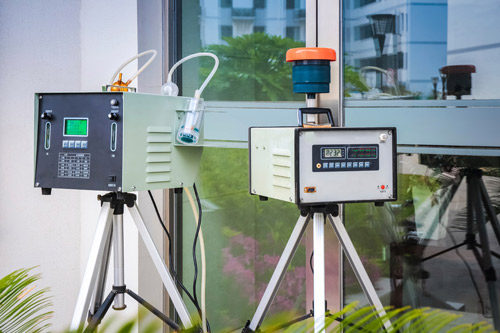
Examples of these processes include:
- Collection of air samples within and around the house or building,
- Collection of samples on the house or building’s surfaces,
- Monitoring of level of pollutant exposure to humans within and around the house or building,
- Modeling of airflow inside the house or building.
Parameters of Indoor Air Quality
1. Carbon(iv)oxide

One of the major indicators of indoor quality is the amount of carbon dioxide (CO2) as it is a highly common gas in the environment. High levels of this gas could lead to dizziness or headaches, confusion and/or difficulty breathing.
Sensor on sensor solutions is an accurate product in measuring the carbon dioxide levels in the air.
2. Volatile Organic Compounds (VOCs)

VOCs can be in several hundred gaseous forms, which originate from different sources, such as:
- Preservatives in furniture,
- Chemicals in cleaning products,
- Combustion from cooking,
- Odors from personal care products.
Gas sensors based on a chemi-resistive principle of Metal Oxides (MOx) is a reliable and effective way to measure and monitor VOCs gases.
3. Particulate Matter

The two most distinctive particulate matter are PM2.5 and PM10. These two are air pollutants which can be very hazardous, especially if they reach high levels. This is because they have very small diameters (2.5um and 10um respectively), which means it is very easy for them to reach deeply into our lungs, potentially causing respiratory illnesses.
Sensor-based meters is effective in measuring and monitoring particulate matter levels.
Can Indoor Air be Hazardous to Your Health?
According to the United States Environmental Protection Agency (EPA), the primary cause of indoor air quality in homes is indoor pollution sources that release gases or particles into the air, also known as pollutants. Several factors that can increase concentrations or the levels of these pollutants include:

- High temperatures,
- High humidity levels,
- Inadequate ventilation.
As a result, some of these pollutants can bring health problems, such as:

- Sore eyes,
- Burning sensation in the nose and/or throat,
- Headaches,
- Fatigue
Other pollutants can cause or worsen the following:

- Allergies,
- Respiratory illnesses (i.e. asthma),
- Heart disease,
- Cancer,
- Other severe long-term conditions or even death (particularly when there is a high concentration of certain pollutants, such as carbon monoxide).
There is a well established correlation to common indoor air pollutants and health effects, as shown below:
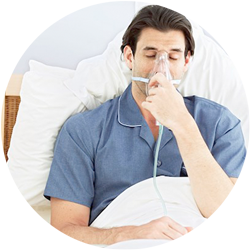
- Radon is a known human carcinogen and is the second leading cause of lung cancer.
- Episodes of Legionnaires’ disease, a form of pneumonia caused by exposure to the Legionella bacterium, have been associated with buildings with poorly maintained air conditioning or heating systems.
How to Tell if You Have a Ventilation Problem

If your body is displaying persistent symptoms, such as allergies, headaches, dizziness, difficulty breathing or any of those mentioned in the list above, or only display these symptoms when you are inside a house or building and go away on their own when you get fresh air or leave the premises, then this may be a sign that there is a ventilation problem.
One example is “sick building syndrome“, in which upon entering a building, the occupants or visitors begin experiencing similar symptoms, which diminish or disappear completely once they exit the building.
How can Indoor Air Quality at Home be Improved?
The United States Environmental Protection Agency (EPA) recommends the following on improving your indoor air:
1. Adjusting Humidity
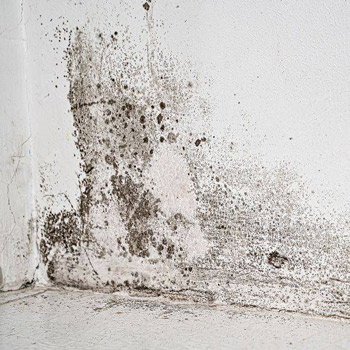
High humidity levels can escalate the growth of mold, or increase the chances of mold developing, as well as affect the concentrations of other pollutants.
Therefore, it is recommended to maintain indoor humidity levels at 30 to 50 percent. In order to check and monitor indoor humidity levels, you can use a humidity gauge. If you wish to increase humidity, then a vaporizer or humidifier would be useful. However, if you need to decrease humidity, you can open the windows if it is not humid outside, turn on an air conditioner and set it in to cool, or open a window if it is not humid outside.
2. Control Sources of Pollution

Based on what was mentioned throughout this article, the more pollutants in the air, the worse the quality level of air becomes. Therefore, the most effective way would be to simply eliminate individual sources of pollutants or reduce their emissions.
3. Ventilation
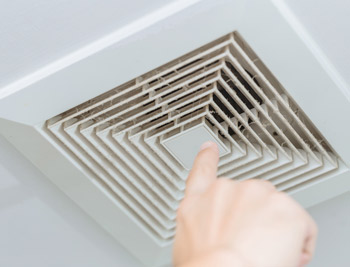
One way to reduce pollutants is by increasing the amount of fresh, clean air indoors. Simple ways could be by opening windows and/or doors and switching on exhaust fans or air conditioners with the vent control open. Another method is by using an energy recovery ventilator (ERV), which we will talk about next.
What is an Energy Recovery Ventilator (ERV)?

Also known as Enthalpy Recovery Ventilator (ERV) (in which enthalpy is defined as ‘the total amount of energy contained in air, the sum of sensible and latent heat’), it is an air to air energy exchanger which enables fresh air exchange by exhausting stale or humid indoor air and supplying an equal volume of fresh outside air. ERVs are ideal for environments with high outdoor humidity and a drier indoor environment. This is because this type of system captures some humidity in the air to keep it on the same side of the thermal envelope in came from.
ERVs can be adjusted according to the season. In summer, an ERV system can be set so that the humidity from outside air is removed before it is transferred indoors. This saves energy by reducing the load on air conditioning systems and/or dehumidifiers inside the house. When it is winter, the ERV system can be set to reverse and, instead, transfers the humidity of the air being extracted to the incoming fresh, dry air to allow for optimal indoor air humidity.
In short, ERVs are ideal for locations that are either: cold and dry; endure hot, humid summers and cold, dry winters; have a moderate temperature or climate; are close to marine areas, like the ocean; hot and humid.
ERV systems are recommended by the United States Environmental Protection Agency (EPA) and the United States Department of Energy (DOE) for occupant health and energy efficiency.
How does an Energy Recovery Ventilator (ERV) Work?

There are two air streams: stale indoor air and fresh outside air. These two streams are directed through an air to air energy exchange core, where they are both then physically separated by many layers of plates so the stale indoor air does not contaminate the fresh outside air. These layers of plates are made from material that simultaneously transfers heat by conduction and humidity by attracting and moving water vapor from one air stream to the other.
The way they are designed helps bring energy savings by recycling energy from the home’s exhaust air to pretreat the outside or ventilated air. This preconditioning of outside air helps reduce the load the HVAC unit needs to handle.
What is the Difference Between an ERV and a Heat Recovery Ventilator (HRV)?
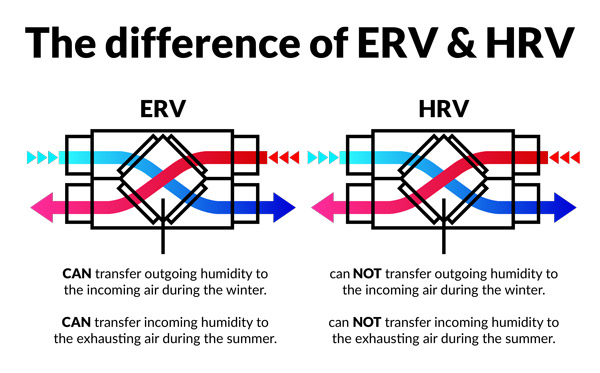
A heat recovery ventilator (HRV) operates using two ducts, in which one functions for extraction of stale indoor air and the other transports fresh air from outside to the inside of the house. These two duct networks intersect in a heat exchange core. This core is capable of heating and cooling new air, and is basically designed so that indoor air never cross-contaminates with the air coming from outside but only heat is exchanged.
How an HRV differs from an ERV is that it is incapable of transferring outgoing humidity to the incoming air during the winter as well as transferring incoming humidity to the exhausting air during the summer.
Which One is Better?

Both systems have their own purposes and, at the end of the day, there is not one right choice between ERV and HRV systems.
This is because choosing one depends on the climate you live in, the lifestyle and any specific needs you have, and your home. For instance, if your house gets too humid during wintertime, then an HRV may be a more suitable choice as it helps to get rid of excess humidity. If your house gets too dry instead, then an ERV may be more fitting because it helps retain humidity at a high level.
Other Articles on ComproGear
- Best Compression Socks for Ankle Swelling https://comprogear.com/best-compression-socks-for-ankle-swelling/
- Compression Socks for Nurses https://comprogear.com/compression-socks-for-nurses/
- Socks for Swollen Feet https://comprogear.com/socks-for-swollen-feet/
- Compression Socks for Swollen Feet https://comprogear.com/compression-socks-for-swollen-feet/
What are the Types of ERVs?
Although there are various types of ERVs for different applications, there are generally four media-component choices for an ERV.
1. Rotary Heat Exchanger (Wheel)
Wheels are the most popular ERV because of their relatively low initial cost, reasonable pressure drop, ease of maintenance and smaller physical footprint.
This is a device, that can be either made of plastic or a type of metal, which rotates between the exhaust and outdoor air streams, meaning that it transfers heat energy that has been picked up from one air stream to the other.
A plastic rotary heat exchanger are capable of absorbing and releasing moisture, while a metal one can only transfer heat.
2. Plate Heat Exchanger (Fixed Core)
These tend to be more expensive than rotary heat exchangers and have a larger physical footprint. Since they have no moving parts, this type of ERV may be more suited for places or certain applications in which a wheel is not permitted, such as a hospital.
Instead of a wheel which rotates between the exhaust and outdoor air streams, a plate heat exchanger allows air streams to pass by each other through a series of channels, which heats up or cools down the material between the channels whilst transferring energy.
These plates can be made of either metal, plastic or even paper.
3. Heat-Pipe Heat Exchanger (Refrigerant)
These heat pipes are made of copper and contain refrigerant within them. These pipes run between the exhaust air stream and outside air stream, and what happens is that one air stream heats the refrigerant, that is inside the pipes, causing it to evaporate. The refrigerant vapor moves down the pipe to the other air stream, which then cools the pipe and, hence, the vapor. As the refrigerant condenses, this warms the cooler air stream. The condensed refrigerant then flows back to the warmer air stream.
4. Runaround Coils (Water)
Runaround coils are similar to heat pipes, however they are often preferred when the exhaust air stream and the outdoor air stream are separated by large distances. Therefore, this would require installation of a water coil in each of the air streams. These two coils will then be piped together and filled with a water/glycol mixture. This mixture is then mechanically pumped between the two coils, enabling heat to be picked up in one air stream and released in the other.
Conclusion
An ERV system is great to have in one’s home as it helps ventilate indoor air and ensure that the air you and your loved ones breathe is consistently safe and clean. This is important as indoor air can become stale or filled with pollutants that the human eye cannot see, which could gradually lead to health issues, particularly respiratory problems. Ventilators such as the ERV are recommended by the United States EPA for maintaining good air quality and can also improve energy efficiency.
References
- “Protect Indoor Air Quality in Your Home,” United States EPA, https://www.epa.gov/indoor-air-quality-iaq/protect-indoor-air-quality-your-home
- “Indoor Air Quality,” United States EPA, https://www.epa.gov/report-environment/indoor-air-quality
- “Care for Your Air: A Guide to Indoor Air Quality,” United States EPA, https://www.epa.gov/indoor-air-quality-iaq/care-your-air-guide-indoor-air-quality#improving
- “How to Measure Indoor Air Quality | The Parameters,” 2020, Home Gear Kit, https://www.homegearkit.com/how-to-measure-indoor-air-quality/
- “EPA AND DOE RECOMMEND ENERGY RECOVERY VENTILATION (ERV) SYSTEMS FOR OCCUPANT HEALTH AND ENERGY EFFICIENCY,” 2019, Airxchange, https://www.airxchange.com/2019/10/epa-and-doe-recommend-energy-recovery-ventilation-erv-systems-for-occupant-health-and-energy-efficiency/
- “CHOOSING BETWEEN AN HRV AND AN ERV,” 2020, Ecohome, https://www.ecohome.net/guides/2276/choosing-between-an-hrv-and-an-erv/
- “What is a Heat Recovery Ventilation (HRV)? Do You Need it?,” Smile HVAC, https://smilehvac.ca/blog/heat-recovery-ventilation/
- “What is an HRV? What is an ERV?,” LifeBreath, https://www.lifebreath.com/what-is-an-hrv-erv/
- “ENERGY RECOVERY – TOTAL RECOVERY VENTILATORS: Balanced Ventilation for Residential and Commercial Buildings,” 2019, Solar & Palau Ventilation Group, https://www.solerpalau-usa.com/documents/Brochure/total-recovery-ventilator.pdf
- “The Facts about Energy Recovery Ventilators,” 2009, Architect Magazine, https://www.architectmagazine.com/technology/products/the-facts-about-energy-recovery-ventilators_o
This page last updated October 25, 2022